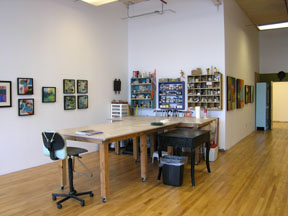 |
| The Black One, 2011, tarpaper, book covers, patinated aluminum, oilstick, encaustic, tacks, 36"x36" |
That said, sometimes I feel compelled to make works that are related to but not part of this series. These works celebrate the color black and revel in darkness. This part of my oevre precedes The Running Stitch by many years and seems to be my natural aesthetic. So here are two large works in what I have named "The Dark Series." (Click pix to enlarge.)
As far as the context and/or antecedents of this work, I think it derives from my great admiration for and study of African and African American art. This is my connection to Leonardo Drew and El Anatsui. At the same time, it relates strongly to the early work of Lee Bontecou and to Louise Nevelson, both white American artists. I believe that Bontecou's canvas work of the 1950s and 1960s was also strongly influenced by an African aesthetic as was Nevelson's.
Both The Running Stitch and The Dark Series are composed of found and invented objects in a form called "bricolage," which I have written about many times (and which is the subject of my Art of Bricolage blog). Bricolage has probably always existed and predates the use of conventional or specialized art materials. The Italian Arte Povera movement of the 1960s claimed this use of "everyday materials" for their own to "break down the dichotomy between life and art" (to quote from MoMA's statement on the topic). However, that movement did not combine the free or low cost materials in a geometric presentation, and geometry seems to be a major part of my own aesthetic and of both my continuing series.
I like this idea of having two ongoing series. It lets me feel free to experiment more. Someone recently called me a rebel, and I guess that all of us who grew up in the '60s have a rebellious outlook to some extent. That seems to have become stronger as I've grown older and witnessed the way the world threatens to break apart. It won't be long now before I'm out there on the streets occupying something, but right now I'm quite busy occupying my studio.







